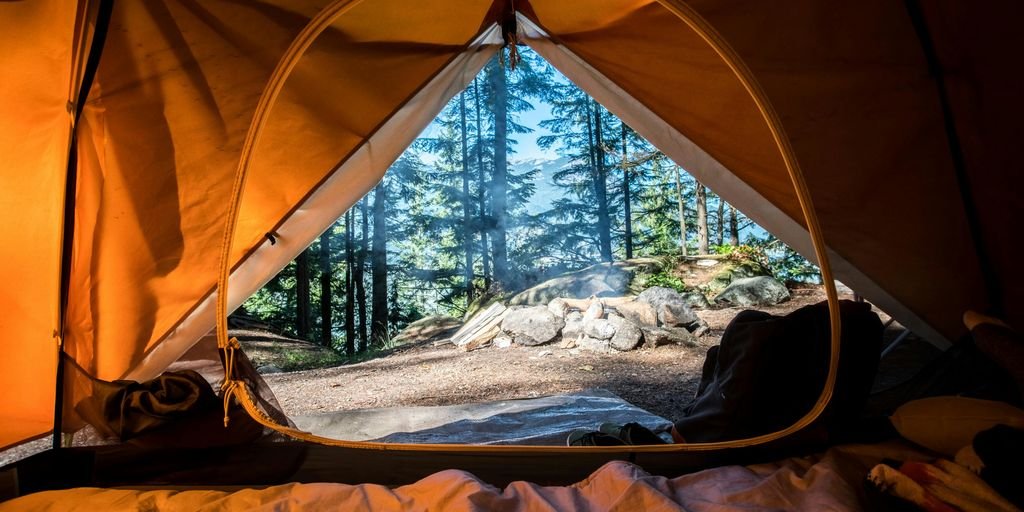In today’s world, where environmental conservation is more crucial than ever, outdoor enthusiasts are increasingly turning to eco-friendly equipment to enhance their adventures while minimizing ecological impact. This article explores the latest trends, types, and innovations in sustainable outdoor gear, providing insights into how these products are revolutionizing outdoor activities and daily life with an eye on sustainability.
Key Takeaways
- Understanding current trends in eco-friendly outdoor gear helps consumers make informed choices.
- There is a diverse range of eco-friendly equipment available, from outdoor adventure gear to daily use products and tech innovations.
- Smart, sustainable gadgets like solar-powered chargers and energy-efficient cooking gadgets are key for reducing environmental impact.
- Choosing sustainable gear involves considering materials, durability, efficiency, and brand ethics.
- The future of outdoor gear is leaning towards innovations that enhance performance while being environmentally responsible.
Current Trends and Facts in Eco-Friendly Outdoor Gear

Emerging Materials
In the quest for sustainability, the outdoor gear industry is increasingly turning to emerging materials that are both eco-friendly and high-performing. Innovations such as biodegradable fabrics and recycled materials are becoming more prevalent, offering outdoor enthusiasts options that reduce environmental impact without compromising quality.
Innovative Designs
The design of outdoor gear is evolving to incorporate more sustainable practices. Features like modularity and repairability are being emphasized to extend the lifespan of products, thereby reducing waste. This shift not only supports sustainability but also caters to consumer demand for durable and adaptable outdoor equipment.
Consumer Preferences
Recent trends indicate a significant shift in consumer preferences towards eco-friendly outdoor gear. More individuals are prioritizing products that align with their values of environmental responsibility. This change is reflected in increased sales of sustainable products and a greater willingness to invest in higher-quality, longer-lasting items.
The industry’s commitment to sustainable practices is evident in the technological advancements and changing consumer preferences highlighted across various platforms.
Types of Eco-Friendly Equipment
Outdoor Adventure Gear
Eco-friendly outdoor adventure gear is designed to minimize environmental impact while maximizing functionality. From recycled materials in backpacks to biodegradable tents, these products ensure that your adventures leave a lighter footprint on the planet. Popular items include solar-powered lights and water purifiers that use advanced filtration technology.
Daily Use Products
Everyday products made with sustainability in mind are becoming increasingly popular. Items such as reusable water bottles, eco-friendly cleaning supplies, and clothing made from organic materials not only help reduce waste but also promote a greener lifestyle. These products are essential for those looking to make eco-friendly choices in their daily lives.
Tech Innovations
The integration of technology into eco-friendly equipment has led to significant advancements. Solar chargers, energy-efficient appliances, and smart gadgets that monitor energy usage are just a few examples of how technology is being used to promote sustainability. These innovations offer convenience while also helping to conserve resources and reduce environmental impact.
Smart, Sustainable Gadgets

Eco-friendly technology is also making waves in outdoor gear. From solar-powered chargers to energy-efficient cooking gadgets, these innovations are designed to reduce environmental impact. They provide a way for outdoor enthusiasts to enjoy modern conveniences while being mindful of their energy consumption and ecological footprint.
Solar-Powered Chargers
Solar-powered chargers are a cornerstone of sustainable outdoor technology, allowing users to harness the power of the sun to charge devices without relying on conventional energy sources. This not only conserves energy but also enhances the portability of charging solutions for outdoor activities.
Energy-Efficient Cooking Gadgets
Incorporating energy-efficient cooking gadgets into outdoor adventures can significantly reduce the carbon footprint of camping or hiking trips. These gadgets are designed to use minimal energy while providing maximum efficiency, making them ideal for eco-conscious travelers.
Eco-Friendly Lighting Solutions
Lighting is essential for safety and convenience in outdoor settings, and eco-friendly lighting solutions are designed to provide ample illumination without a heavy environmental toll. Options like LED lanterns and solar-powered lights are popular choices, offering long-lasting and sustainable light sources.
How to Choose Sustainable Gear

Choosing the right eco-friendly gear involves several factors that ensure you make sustainable choices without compromising on quality or functionality. Here are some key considerations:
Material Considerations
When selecting gear, prioritize products made from recycled or organic materials. These materials not only reduce the environmental impact but also support sustainable practices in manufacturing. Look for certifications such as Fair Trade, Organic, or Energy Star which indicate compliance with environmental and ethical standards.
Durability and Efficiency
Investing in durable gear is crucial as it ensures longevity and reduces waste over time. Opt for gear that is not only built to last but also offers efficiency in performance. Durable gear often comes with the added benefit of being cost-effective in the long run due to fewer replacements.
Brand Ethics
Support brands that are transparent about their production processes and committed to sustainability. Opting for brands with certifications like bluesign®, OEKO-TEX®, or B Corp can make a significant difference. These brands often follow stricter environmental and social guidelines, ensuring that your gear is responsibly made.
Sustainable Gear Innovations of 2024

In 2024, the outdoor gear industry has seen remarkable innovations aimed at enhancing sustainability and reducing environmental impact. These advancements are not only pivotal for the industry but also set new standards for consumer expectations and manufacturing practices.
Outdoor Activities
Innovative products like the NEMO Disco Endless Promise Sleeping Bag and Patagonia Storm Shift PFAS-free Gore-Tex jacket have revolutionized outdoor activities. These products highlight the industry’s shift towards materials that are both eco-friendly and capable of withstanding diverse environmental conditions.
Daily Life
For everyday use, items such as the Lava Linens Woven Wonders Towel and Paka The Original Crew garments demonstrate how daily products can be both sustainable and functional. These innovations are crucial for encouraging a broader adoption of eco-friendly practices in daily life.
Technological Advances
Technological advancements have also been significant, with initiatives like ULA Equipment’s Pack Repair and Tune-Up Program extending the life of gear. This not only reduces waste but also emphasizes the importance of maintaining and repairing rather than replacing.
Brands that invest in these innovations pave the way for new standards, showing the future direction of the outdoor industry.
10 Outdoor Brands Leading the Sustainable Outdoor Gear Movement

The outdoor industry has seen significant advancements in sustainability, with brands actively seeking new opportunities and partnerships for a more responsible future. These brands are proving that eco-conscious choices don’t have to compromise on performance, style, or affordability.
Brand Commitments
Many outdoor brands have set out clear sustainability credentials early in their business models. This proactive approach ensures that every decision aligns with their eco-friendly ethos, from sourcing materials to final product delivery.
Circular Solutions
Brands are increasingly adopting circular economy principles, focusing on the 3Rs: Reduce, Reuse, and Recycle. This includes designing products for longer life, promoting repair services, and using recycled materials to create new products.
Consumer Impact
The commitment of these brands significantly influences consumer behavior, encouraging buyers to prioritize quality and sustainability. This shift is crucial for reducing waste and promoting environmental consciousness among outdoor enthusiasts.
Sustainable practices in the outdoor industry not only benefit the environment but also enhance the consumer’s overall experience by offering high-quality, durable products.
Peak Performance
Peak Performance champions a holistic approach to sustainability, focusing on responsible material sourcing, reducing their environmental footprint throughout the supply chain, and extending product lifespans. Their commitment is evident in their detailed sustainability reports and their dedication to designing durable, long-lasting gear.
Enhancing Outdoor Experiences
Peak Performance’s Care & Repair program goes above and beyond, offering complimentary repair services in-store, such as zipper slider replacements and down jacket patching. Adding to their commitment, Peak Performance utilizes leftover fabric scraps to repair small tears, minimizing resource waste and showcasing their dedication to sustainability.
Minimizing Environmental Impact
Check out their recent Helium Utility Flo collection, which utilizes surplus fabrics to create the outerwear piece. This initiative not only reduces waste but also promotes the reuse of materials, significantly lowering the environmental impact of production.
Sustainable Future Considerations
Brands like Patagonia, Arc’teryx, and Peak Performance are making the most out of repair programs and consignment gear, which, in turn, increases customer loyalty and engagement. Peak Performance goes beyond, engaging communities through sustainability events like their recent Peak Performance Kitsilano Upcycling workshop – the first of its kind and hopefully another great example of what’s to come for the industry.
Conclusion
In conclusion, choosing the best outdoor gear for adventure enthusiasts goes beyond functionality and convenience — it also involves making sustainable choices that minimize our impact on the environment. By investing in eco-friendly products, practicing responsible waste management, and supporting sustainable living practices, we can enjoy outdoor adventures while preserving the beauty of nature for future generations. Let’s gear up for a greener and more sustainable outdoor experience!
Frequently Asked Questions
Can outdoor gear be both eco-friendly and high-performing?
Yes, advancements in materials and technology allow outdoor gear to be both eco-friendly and high-performing, ensuring durability and efficiency without compromising on environmental values.
Are there eco-friendly options for high-intensity outdoor sports?
Absolutely! There are numerous eco-friendly options available that cater to high-intensity outdoor sports, including gear made from sustainable materials and designed for minimal environmental impact.
How can I ensure my outdoor gear is sustainable?
To ensure sustainability, look for gear made from recycled or biodegradable materials, produced by companies with strong ethical practices, and designed for long-term use and efficiency.
What are the latest innovations in eco-friendly outdoor gear for 2024?
The latest innovations include biodegradable camping supplies, solar-powered devices, and sustainable clothing, all designed to enhance outdoor experiences while being environmentally responsible.
What should I consider when choosing eco-friendly outdoor gear?
Consider the materials used, the durability of the product, and the ethical practices of the brand. Opt for gear that supports sustainable practices and minimizes environmental impact.
How do eco-friendly outdoor gear brands contribute to sustainability?
Eco-friendly outdoor gear brands contribute by using sustainable materials, implementing circular solutions, and actively reducing the ecological footprint of their products and operations.



